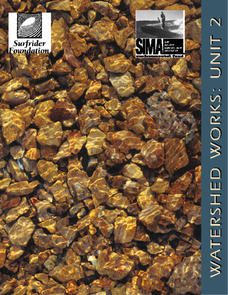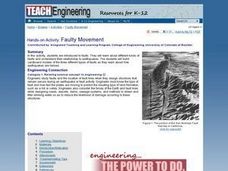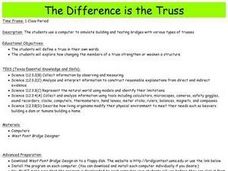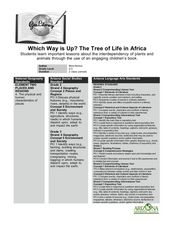Curated OER
Do Dams Affect the Paddlefish Population?
Students study why dams are built and what is affected by them. They build model dams and explain how dams can be a detriment to paddlefish population.
American Chemical Society
Atoms Can Be Rearranged to Make Different Molecules
Uncover the building blocks of the universe as budding chemists explore atoms and molecules in an exciting inquiry-based activity. Investigators view an interactive video describing the chemical structure of six molecules. Using...
American Chemical Society
What is Wind?
Engage creative minds with an exciting activity about the power of wind. Investigators participate in class discussions while viewing images and animations of air and wind. Scholars test the relationship between wind speed and an...
Curated OER
Models of Succession
Learners create a model city in order to understand the effects human habitats have on the environment. In this environment lesson, students examine the effects human habitats have on the environment. Learners create a model city and...
American Chemical Society
The Periodic Table and Transuranium Elements
The periodic table has so much more to it than meets the uninformed eye. An inquiry-based lesson leads learners through the history of the discovery of several transuranium elements. They then use informational resources to build a...
Foundation for Water & Energy Education
How Can a Dam Affect a River? Activity B
Second in a pair of activities, young ecologists continue to examine the food pyramid of a freshwater ecosystem. They take a look at the food pyramid drawn in Activity A and consider what would happen if a reservoir was created on the...
Curated OER
Watershed Works: Unit 2
The second of a three-unit lesson plan, this focuses on how human-made structures affect watersheds. Using watershed models that were built during the first unit, junior geologists now place buildings, dams, or levees into the models and...
American Chemical Society
The Water Cycle
Bring the water cycle into the classroom without the mess. Learners build a model of the water cycle using everyday materials. They observe the process of evaporation and condensation and relate their observations to the larger scale...
Teach Engineering
Water Power
Young hydrologists observe a waterwheel which helps them investigate the transformations of energy that occur when the blades of a hydro-turbine are turning. They work together in pairs and pretend to be engineers who are building a new...
Curated OER
An Uphill Swim
Students explore the concepts and engineering principles used in a canal lock system and apply those concepts to navigate a boat through a working model of a canal lock waterway.
Curated OER
Faulty Movement
Students discover the faults throughout the Earth. They describe the different types of faults and how they are related to earthquakes. They build models of the faults.
Curated OER
The Difference is the Truss
Young scholars use a computer to simulate building and testing bridges with various types of trusses.
Curated OER
Which Way is Up? The Tree of Life in Africa
Students read a book titled This is the Tree about a baobab tree and draw a picture and label the tree. In this tree lesson plan, students also write a paragraph explaining why they drew that tree.
Curated OER
Functional Homes
Students observe and reflect on habitats built and used by various life forms. They discover the benefits of the "homes" to the creature and its life and apply the natural designs to human uses.
Curated OER
Soapy Stress
Students investigate the three types of material stress related to rocks. They identify the three types of stress, conduct a simulation by breaking bars of soap using only their hands, and complete a worksheet.
Curated OER
Cell City Analogy
In this cell analogy learning exercise, students are given a story about a city that produced widgets. They compare this to a cell and identify the parts of the cell that are analogous to the parts of the city. They then create their own...
Curated OER
Strong as the Weakest Link
Young scholars discover the types of stress that materials undergo. They examine how bridges and skyscrapers are built to withhold the tension. They create their own structure out of marshmallows and spaghetti.
Curated OER
Geography Action! Rivers 2001- River Puzzle
Students cut out puzzle pieces and create a healthy river by putting the pieces together in a logical order on construction paper. Students begin by placing the "source" piece at the start of the river and the "mouth" piece at the end,...
Curated OER
The New Wind Turbine
Students study the basic components of a modern wind machine. In this investigative lesson plan students investigate and find out if there are any wind machines in their state, how many and how much power they produce.




















